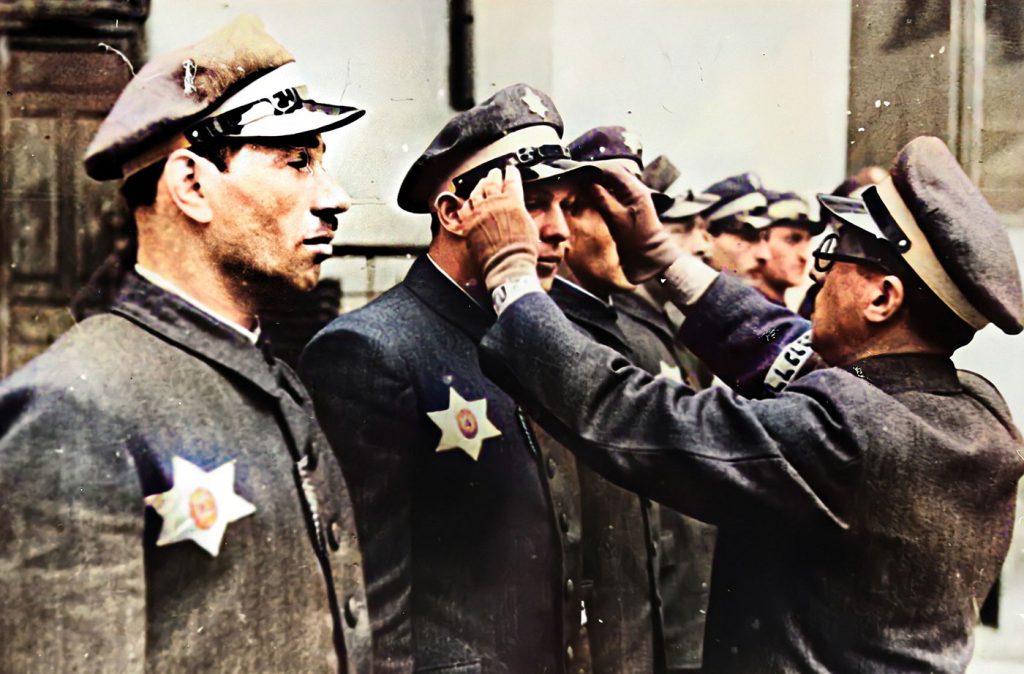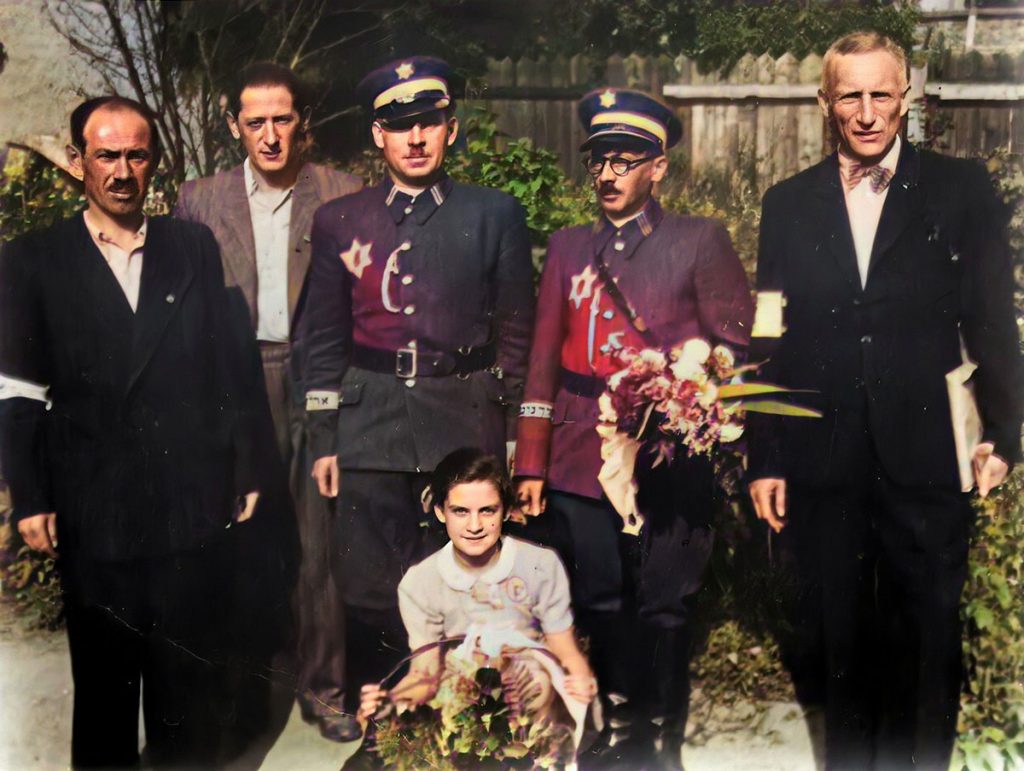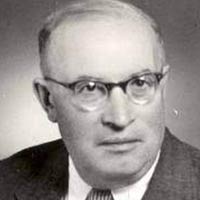Symcha Spira
Also known as Symche Spira, Symche Spiro, or Symche Shapiro was the Chief of the Kraków Jüdischer Ordnungsdienst (Jewish Ghetto Police), which in the Ringelblum Archive is directly referred to as an enterprise. (Ringelblum Archiv is a collection of documents from the World War II Warsaw Ghetto, collected and preserved by a group known by the codename Oyneg Shabbos, led by Jewish historian Dr. Emanuel Ringelblum.) Unlike the Kraków Judenrat, the Kraków OD were extremely unpopular under Spira’s leadership. In part because of Spira’s sycophantic qualities, the Kraków OD (Ordnungsdienst-men / Order-men) collaborated with Nazi officials and local police to a greater degree than other ghettos. The Civil Division of the OD in particular worked closely with the Gestapo.
Before the war he was a religious Hassid, he worked as a glazier, making very little money. He spoke German and Polish badly (his mother tongue was Jewish), he had no education, and according to some he was almost illiterate. He quickly began to imitate the Germans - he wore elegant clothes, high boots with uppers and riding crop. He was chosen for the position for his extreme loyalty to the Germans, as well as for his derision of his fellow Jews. Spira was known to wear outlandish, tailored uniforms while patrolling the ghetto. He beat and extorted the ghetto’s inhabitants, becoming very wealthy under Nazi occupation.
Symche Spira was a particularly disgusting figure in the Krakow ghetto. Megalomaniac and fantast, a classic example of a psychopath, neurasthenic, liverwort, subject to frequent attacks of urolithiasis, erotomaniac, looking for new and easy love adventures, half illiterate, speaking Polish badly and German equally bad, caused real disgust with his obedience to Germans.

Both Spira and other jewish policemen – not only from the Krakow ghetto – knew perfectly well that the high position in the ghetto and the connections it entailed open the pockets of other Jews.

In 1942 (after the [ŻOB] commander Dolek Libeskind had escaped from the Krakow ghetto), he arrived with Zivilabteilung employee Michał Pacanower to the Bochnia ghetto to arrest the members of Bnei AkibaBnei Akiba - Hebrew "Sons of Akiba", a Jewish youth organization named after Rabbi Akiba, a scholar, teacher and Jewish leader during the Bar Kochbywa uprising in the years 132–135. His martyrdom at the hands of the Romans became a symbol of Kiddush Ha-Shem [sacrificing his life for faith in God]. Bnei Akiba operated in Poland from 1924, it was a Zionist organization with particular emphasis on the Jewish tradition. Members of this organization were particularly active in Krakow and the surrounding area and formed the backbone of the ŻOB in this area..
Tadeusz PankiewiczTadeusz Pankiewicz (1908 - 1993) - Polish pharmacist, graduate of the Jagiellonian University, owner of the "Pod Orłem" (polish: "Under the Eagle") pharmacy in Krakow, the only pharmacy operating in the Krakow ghetto. He came from a family with patriotic traditions. For his activity in aiding and rescuing Jews, he was awarded the medal "Righteous Among the Nations". He described his wartime memories in a book entitled "Apteka w getcie krakowskim" ("The Cracow Ghetto Pharmacy"). quotes a conversation with [Wilhelm Kund] about Spira, in which the former explained to him why Spira was appointed the commander of the Jewish police in Krakow:
The choice was made for psychological reasons. For if this position was taken by an intelligent man, an educated man from a different sphere, he would be completely out of place. Instead of going hand in hand, it would make our work difficult. This was the case with dr. Rozenzweig. He was a rather insecure man; he did not want and could not work like Spira or Gutter. (...) You could actually buy them with a new parade uniform, which would make them stand out among others. Although they were free to leave the ghetto, they would never have thought of running away. You had to develop a sense of greatness and power in them. Therefore, the authorities were sincerely indignant about SS-man Pilarzik, who punched Spira in the face. Pilarzik had received a reprimand Spira knew about, and this managed to reawaken his faith in his own power. He worked diligently, probably to the very end. Spira's intervention was usually successful. People close to Speyer were released from custody and taken from the transport to assure him of the special privileges he had for his faithful service. That these were only appearances, he found out the hard way at the end.
Aleksander Bieberstein Aleksander Bieberstein (1889 - 1979) - doctor, diarist of the Krakow ghetto. Throughout the entire period of World War II, Bieberstein kept notes and records documenting the fate of Krakow's Jews, which, however, were lost during the evacuation in the Gross-Rosen camp. After the war, he tried to recreate this documentation as accurately as possible from memory and from conversations with the surviving Krakow Jews.) wrote: “OD-men were liveing in the lap of luxury. Managers, in particular, made extra money with bribes“.
Aleksander Bieberstein (1889 - 1979) - doctor, diarist of the Krakow ghetto. Throughout the entire period of World War II, Bieberstein kept notes and records documenting the fate of Krakow's Jews, which, however, were lost during the evacuation in the Gross-Rosen camp. After the war, he tried to recreate this documentation as accurately as possible from memory and from conversations with the surviving Krakow Jews.) wrote: “OD-men were liveing in the lap of luxury. Managers, in particular, made extra money with bribes“.
The Jewish policemen were obviously convinced that by collaborating with – not opposing – the Germans, and denouncing their brethrens to them, they would save their skin. They couldn’t be more wrong, Symche Spira died in the Płaszów concentration camp, not long after he himself sent a group of people to deaths to concentration camps.
Witold Mędykowski "Przeciw swoim. Wzorce kolaboracji żydowskiej w Krakowie i okolicy"








